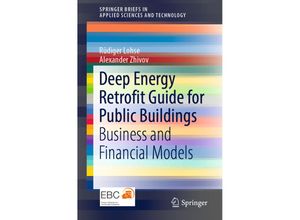This book provides detailed information on how to set up Deep Energy Retrofits (DERs) in public
buildings and shares in-depth insights into the current status of the major technologies
strategies and practical best practice examples of how to cost-effectively combine them. Case
studies from Europe are analyzed with respect to energy use before and after renovation
reasons for undertaking the renovation co-benefits achieved resulting cost-effectiveness and
the business models employed.The building sector holds the potential for tremendous
improvements in terms of energy efficiency and reducing carbon emissions and energy retrofits
to the existing building stock represent a significant opportunity in the transition to a
low-carbon future. Moreover investing in highly efficient building materials and systems can
replace long-term energy imports contribute to cost cutting and create a wealth of new jobs.
Yet while the technologies needed in order to improve energy efficiency are readily available
significant progress has not yet been made and best practices for implementing building
technologies and renewable energy sources are still relegated to small niche applications.
Offering essential information on Deep Energy Retrofits the book offers a valuable asset for
architects public authorities project developers and engineers alike.

